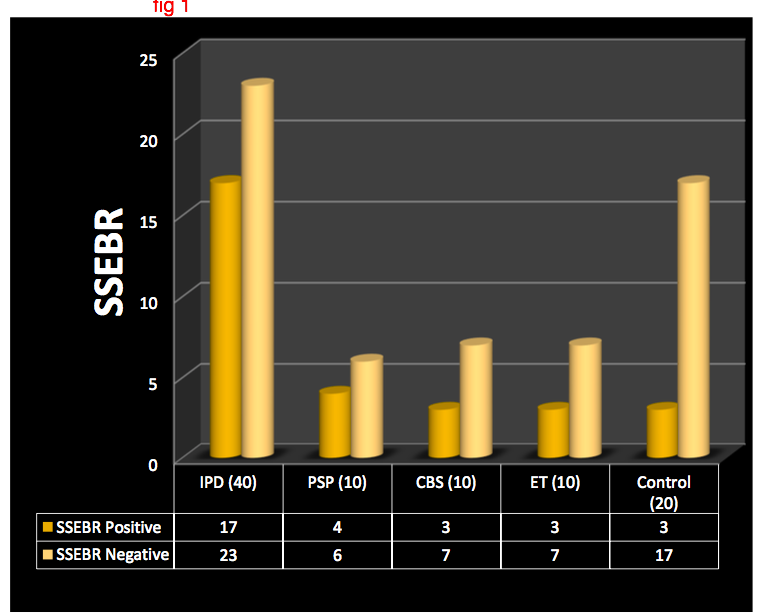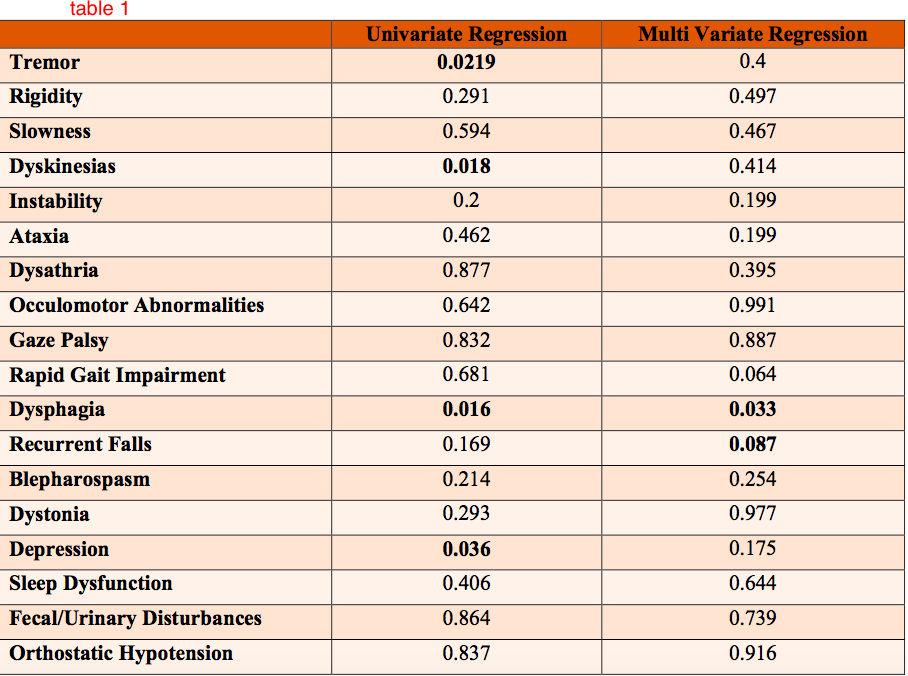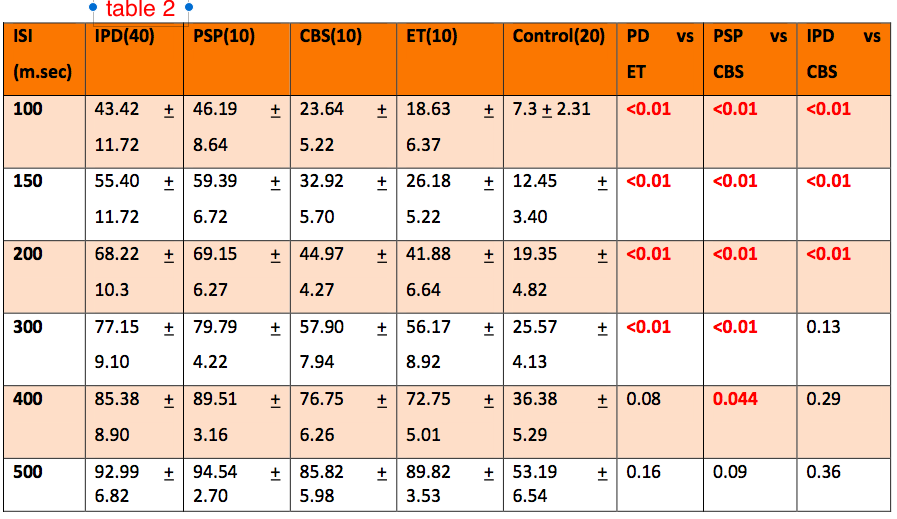Session Information
Date: Monday, October 8, 2018
Session Title: Parkinson's Disease: Neuroimaging And Neurophysiology
Session Time: 1:15pm-2:45pm
Location: Hall 3FG
Objective: To assess somatosensory evoked blink reflex (SSEBR) and Blink Reflex recovery curve (BRrc) in patients with Parkinsonism Syndromes and compare it with normal control population.
Background: Patients with Parkinsonism syndromes may present with functional abnormalities of brainstem reflexes in the form of motor and non motor symptoms, resulting from disturbed activity of loops between thalamus and the investigated circuits. Brain stem interneuron excitability can be assessed by somatosensory evoked blink reflex and Blink Reflex recovery curve.
Methods: Totally 90 subjects were included. Out of 90 subjects 60 were diagnosed with Parkinsonism Syndromes (40 PD, 10 PSP, 10 CBS) based on clinical criteria, 10 patients with Essential tremor (ET) and 20 were healthy controls. We assessed SSEBR and BRrc in these patients. For SSEBR, median nerve was stimulated and presence of R2 component of Blink reflex was assessed. For BRrc, paired stimuli were applied at supra orbital notch with inter stimulus intervals (ISI) ranging from 100 to 500 milliseconds, separated by time intervals of 15 to 30 seconds to minimize habituation. The ratio of Conditioned/ Unconditioned R2 amplitude is taken and average of 5 values for each paired stimulus was taken.
Results: We observed that the presence of SSEBR was more common in patients with Parkinson’s disease. SSEBR was positive in 17(42.5%) patients with IPD, 4(40%) patients with PSP, 3(30%) patients with CBS, 3(30%) patients with ET and 3(15%) of the control population (fig.1). Dysphagia, Tremor, Dyskinesia and Depression showed positive correlation with SSEBR (table 1). The average blink reflex recovery was earlier in patients with PD and PSP when compared to patients with CBS and ET which in turn was slightly earlier than control populations. There was a statistically significant early Blink Reflex R2 component Recovery in IPD patients compared to ET and CBS patients at ISI of 100ms, 150ms, 200ms and 300ms(p<0.01). In PSP patients, R2 recovery was statistically significant at ISI of 100ms, 150ms, 200ms, 300ms and 400ms (p<0.01)(table 2).
Conclusions: In Parkinson’s disorder patients the presence of SSEBR was associated with increased probability of Dysphagia, Dyskinesia, Tremor and Depression. BRRC may be used as a supportive tool in differentiating the patients with PSP from CBS and PD from ET.
To cite this abstract in AMA style:
S. Tandra, R.M. Mridula, R. Borgohain. Blink Recovery Pattern and Somatosensory Evoked Blink Reflex in patients with Parkinsonism syndromes [abstract]. Mov Disord. 2018; 33 (suppl 2). https://www.mdsabstracts.org/abstract/blink-recovery-pattern-and-somatosensory-evoked-blink-reflex-in-patients-with-parkinsonism-syndromes/. Accessed December 20, 2025.« Back to 2018 International Congress
MDS Abstracts - https://www.mdsabstracts.org/abstract/blink-recovery-pattern-and-somatosensory-evoked-blink-reflex-in-patients-with-parkinsonism-syndromes/



